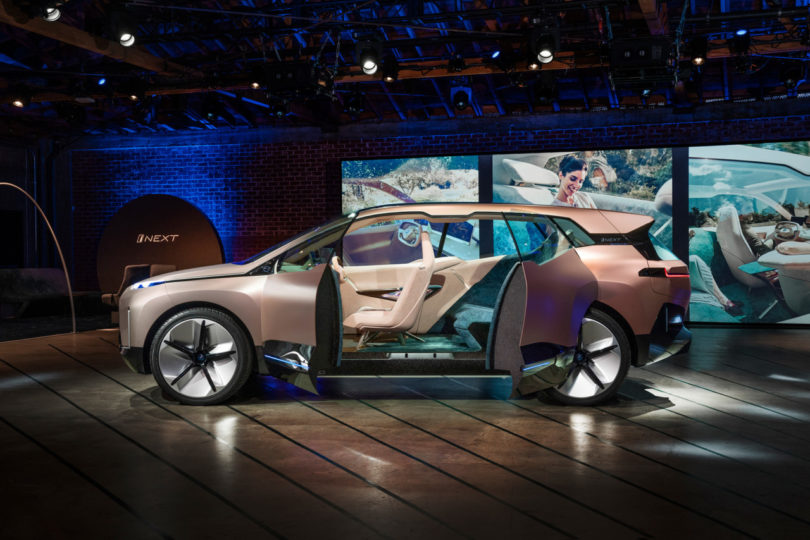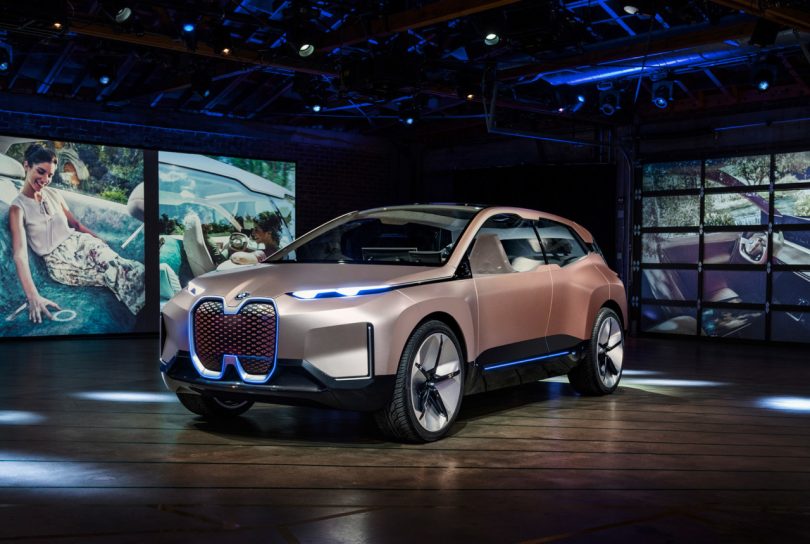A Close-Up with the BMW Vision iNEXT
The 2018 Los Angeles Auto Show was marred by a surprising downpour of rain, but nevertheless, the exhibition left a warm impression with the unveiling of the BMW Vision iNEXT. On display in a private venue, parked in an industrial section of Downtown Los Angeles, we were given an opportunity to tour the vehicle in person to gain additional insights about what the German automaker has envisioned for drivers following developing trends toward autonomous technologies and lifestyle trends within electric vehicles might soon encounter in the luxury automotive category.
Guided by Steven Wörns, BMW Group Innovations & Design Communication, touring the all-electric BMW Vision iNEXT show car in person affords additional clarity about what the automaker describes as “human-centered design”. First proposed earlier in September through a series of dreamy renders and a highly styled video illustrating the journey from conceptual to physical, in person the Vision iNEXT looks and feels surprisingly not too far off from reality.

Entry into the expansive environment within the Vision iNext is offered via automated suicide doors.
Though plenty of attention was given to the vehicle’s exterior – including the concept’s stunning matte copper finish (Liquid Greyrose Copper), its seemingly endless sunroof, the suspicious squint of its narrowed headlights, and the sharp angular muscular flanks cutting the wheel arches from an otherwise – the most intriguing features reside within BMW’s Sports Activity Vehicle interior.

The Vision iNext isn’t just prognosticating an electric future, but one offering standard level 3 autonomy for drivers to ease full attention during highway travel, with the possibility of level 4 or 5 full autonomous driving as the required technology evolves thanks to the array of sensors equipped, inside and out.
The elegant environment – revealed behind a pair of suicide doors that open with the swipe of our host’s tablet controls – divulges BMW isn’t obtuse to driving habits evolving from one behind the wheel to one simply enjoying the ride. Besides a layout of two landscape oriented screens, the interior cabin is mostly stripped of distractions, bowing to perceived “feel” over the presence of “function”.
Awash with modern hues complementing a harmonious interplay of hard and soft materials that seem to spill, pour, and undulates into and from every corner, the interior is airy and inviting. Strongly inspired by home/hospitality decor, the push toward an environmental experience is most prominently communicated by the warmth of wood with the collaborative combination of colors bathed by light coming from above through its roofline – a foundation of Purus Rosé illuminating the electric Jacquard weave upholstery pouring from the curvaceous sofa-like rear seating (BMW calls it Enlighted Cloudburst, but the pixelated flecks of green floating within the sea of aquamarine hint something more aquatic than heavenly). The cabin is quietly framed by grey carbon fiber detailing visible covering the transition of the exterior into the interior while the doors are opened.
BMW senior vice president of design for the BMW Group Adrian van Hooydonk emphasizes the design team aimed to fashion a passenger experience with technology and information distilled into ambient interactions, rather than series of front and center interruptions: “We call it ‘shy-tech,’ not high-tech,” explains van Hooydonk.
Touch plays prominently across both soft and hard surfaces inside the concept vehicle, with the integration of intelligent materials allowing gestural movements similar to those common to mobile devices. An early touch/swipe and iconographic drawing interactive system already inhabits the iNEXT concept vehicle across the center armrest, and also in a small cordoned section in the ocean of upholstery in the rear.
During our demo the system proved somewhat persnickety in the sensitivity department, but even so, the example of shy tech hints how nearly any and all surfaces may soon become interactive, possibly making the BMW Vision iNEXT – or its eventual kin – the world’s largest touch UI device.























